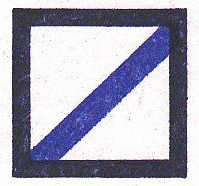No. 107 R.A.F. Beach Flight originated from No. 68 R.A.F. Beach Unit, which was disbanded at the end of 1943 to be reformed as No. 107 Beach Section and later renamed 107 Beach Flight. No. 107 Beach Flight was part of No. 4 R.A.F. Beach Squadron, and worked with the Army’s No. 9 Beach Group in the King sector, GOLD assault area, in Normandy during Operation “OVERLORD”.
No. 107 R.A.F. Beach Section
Formed from the disbanded No. 68 R.A.F. Beach Unit at R.A.F. West Kirby at the beginning of 1944, No. 107 R.A.F. Beach Section was initially commanded by Squadron Leader H. M. Butler (72182). It was one of two Beach Sections in the new No. 4 R.A.F. Beach Unit, the last of four Beach Units to be formed for the forthcoming invasion of North West Europe.
With the rest of the Unit, 107 Beach Section moved to the 2nd T.A.F. Headquarters at Bracknell in February 1944. No. 107 Beach Section was to be attached to No. 9 Army Beach Group, replacing No. 105 Beach Section of No. 3 Beach Unit.
107 Beach Section moved to join 9 Beach Group in a Concentration Area at Hursley towards the end of March 1944. Flight Lieutenant L. A. Taylor was posted from No. 3 Beach Unit, promoted to Squadron Leader and took over command of No. 107 Beach section from S/Ldr Butler.
Early in April 1944 No. 107 Beach Section took part in Exercise “CROPPER” in the Bracklesham area and, in mid-April the Landing personnel and Police participated in Exercise “SMASH III” at Studland Bay.
At this time No. 107 Beach Section was renamed No. 107 Beach Flight.
No. 107 R.A.F. Beach Flight
The change of name from 107 Beach Section to 107 Beach Flight in April 1944 was a change in name only and had no other impact on the unit, which was completing its preparations for the coming invasion of North-West Europe.
As April ended and May began, the Flight was involved in the full scale exercise “FABIUS II” at Hayling Island which was somewhat hampered by poor weather. Then there was a break before the time came to move to final marshalling areas.
On 13th May 1944, most personnel of 107 Beach Flight left Hursley for the Ipswich area, 38 of them going to Camp R7 and 10 to Camp R8. They were going to embark at Felixstowe and land Second Tide with Force L, the follow-up force.
The rest of the Flight remained at Hursley. On 19th May those landing 1st Tide with Force G2 moved to Camp C22 at Southampton.
Embarkation of these different parties (serials) of the Flight took place from 2nd to 4th June.
107 R.A.F. Beach Flight in Normandy.
107 Beach Flight was assigned to work with No. 9 Beach Group in the King sector of the GOLD assault area.
On D-Day, Squadron Leader L. A. Taylor, the Flight Commander, landed on King Red beach from an L.C.A. at 08:50 hours, having made the crossing in a L.C.H. (part of Assault Group G2 from Southampton). Flight Lieutenant Wilson the Landing Officer and Flight Sergeant Gould, senior N.C.O. of the Landing Section landed in a jeep from an L.C.T. IV at 09:10 hours (also part of Force G2).
Opposition at King Red beach was quickly overcome by the assault troops of the 69th Brigade and the village of Ver-sur-Mer was cleared of the enemy by approximately 10:00 hours, although snipers continued to be active in the vicinity.
No. 9 Beach Group were landing according to schedule in spite of the poor weather and No. 9 Beach Group Command Post was set up in a trench at 11:00 hours.
At H + 6 (13:30 hours) three more men of 107 Beach Flight were scheduled to land from a U.S. L.S.T. 2, arriving with the 151st Brigade in Assault Group G3.
The bulk of the Flight arrived second tide, at H + 18 hours (01:30 hours on 7th June), carried in L.C.T. Mk 3s that were part of the follow-up force, Force L, from Felixstowe.
King Green beach was found to consist of peat and soft clay and so was not used except for a pontoon causeway for personnel. To compensate for this a hard for L.C.T.s was constructed on Love Green beach. King Red beach was developed as planned.
From 7th June, 9 Beach Group H.Q. was operating from the Chateau de la Barre in Ver-sur-Mer. For 107 R.A.F. Beach Flight, life in the King sector became very busy, with large quantities of R.A.F. stores arriving, being stored in beach-head dumps and moved on to the airstrips.
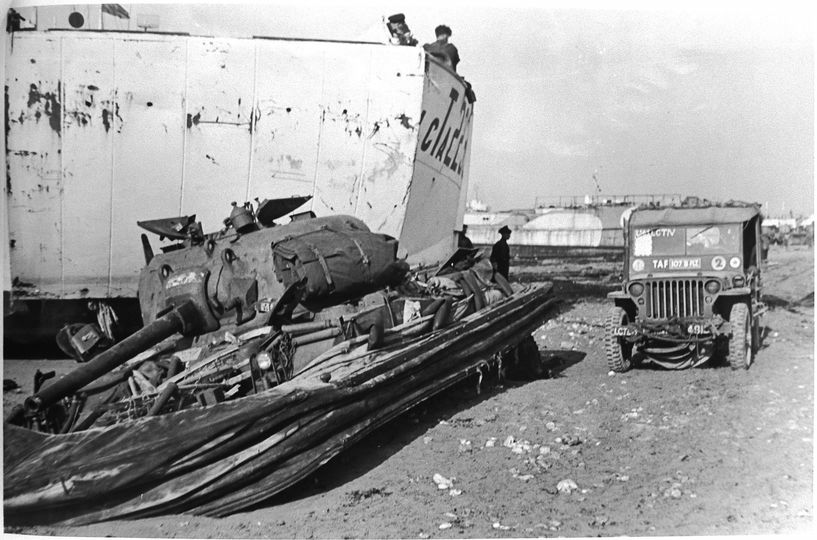
(Photograph taken by Professor J. D. Bernal, scientific adviser to Combined Operations Command, after he landed with the Special Observer Party to conduct a quick survey of the defences and beach terrain at Gold and Juno. It can be found in his report in The National Archives – DEFE 2/430.)
No. 107 Beach Flight Headquarters and the bivouacs of the H.Q. and Landing Section staff were located right at the edge of the beach. The Beach Flight Headquarters consisted of the Beach Flight Commander (S/Ldr. Taylor), an Aircrafthand (General Duties), a Clerk (G.D.) with rank of Corporal, a Cook (meant to be a Corporal) and a Motor Cyclist. The Landing Section consisted of F/Lt Wilson (the RAF Landing Officer, or R.A.F.L.O)., a Flight Sergeant and a Sergeant (both Equipment Assistants by trade) and two Aircrafthands (G.D.).
One of the Aircrafthands (G.D.) was LAC Len Sexton (1483880).
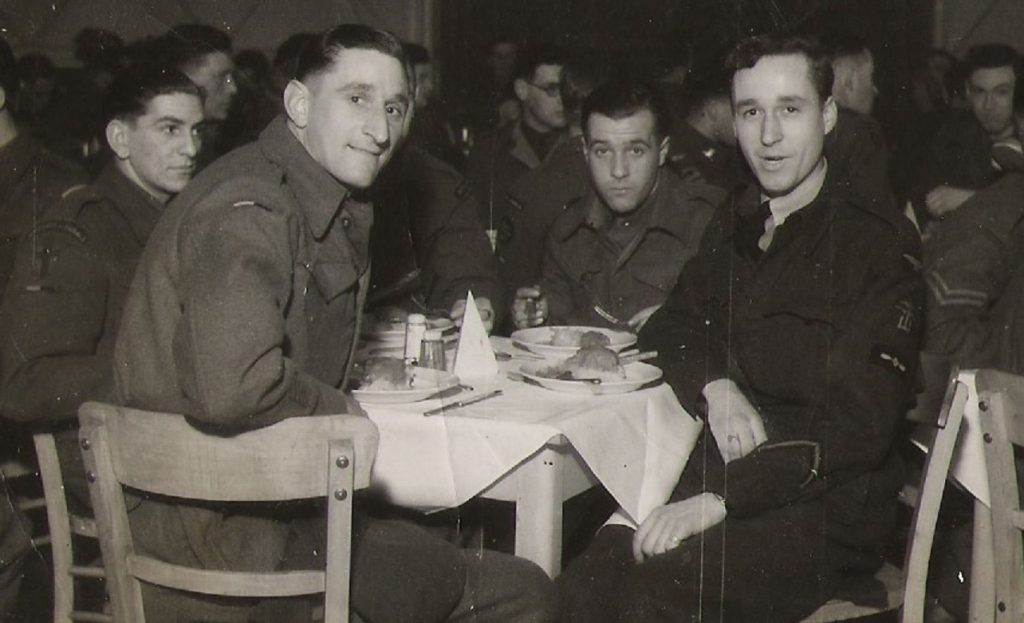
Len was 22 years old. He was an upholsterer from Chester and had volunteered for the R.A.F. because he wanted a quiet war – so he said! He would then joke about how he ended up on a Normandy beach in the assault phase of the invasion. Len (seen on the right of the photo) had been posted to No. 4 Beach Unit at the end of February 1944 and underwent a Combined Operations training course before eventually embarking at Felixstowe and landing second tide along with most of his 107 Beach Flight comrades.
Len recalled that some of the chaps sleeping in the beach area had a washed up hatch from a naval craft over the top of their trench, on which they could hear the odd ping of shrapnel at night.
On the evening of 15th June a dug-out in 107 Beach Flight’s bivouac area had been spoiled so they needed to dig another one. Len Sexton and his mate, James Maxfield, began to dig out a fresh trench but it was also their duty to patrol a section of the beach. It was Len’s turn on the pick axe and he was digging. James came back from patrolling and said, “Len, you do some marching up and down the beach. I would rather dig!”
Len was several yards up the beach, ready to start his patrol when he was thrown to the sand by a blast. James had hit a mine with the pick axe. The area had been swept for mines, and there had been a lot of traffic on it but one of the mines had been missed, until then.
LAC Maxfield was the only fatality in No. 4 Beach Squadron. He was buried the next day at Ver-sur-Mer. His body now lies in the military cemetery at Bayeux.
On 22nd June Flying Officer A. Goodchild, an official R.A.F. photographer, took a series of seven photographs of 107 Beach Flight in an attempt to illustrate the work of the R.A.F. Beach Squadrons. Len Sexton was in four of the photos and when one of them was published in the national press and then the Chester Courant on 5th July 1944, Len’s mum kept the clipping from the paper, which mentioned her son’s name.1
The photographs were released with the accompanying ‘story’,
“AN R.A.F. BEACH SQUADRON IN FRANCE. Amongst the first of the parties to arrive on the beaches on the morning of “D” Day were the Beach Squadrons. Since then, these men have lived and worked on the beaches. Their job is to organise the unloading and dispatching of war materials – including the very important item of petrol for the R.A.F. “
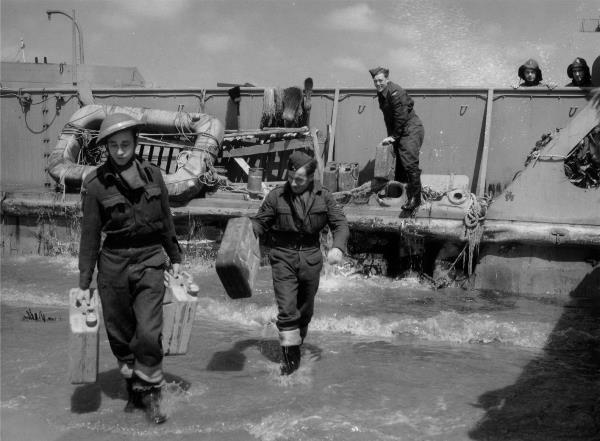
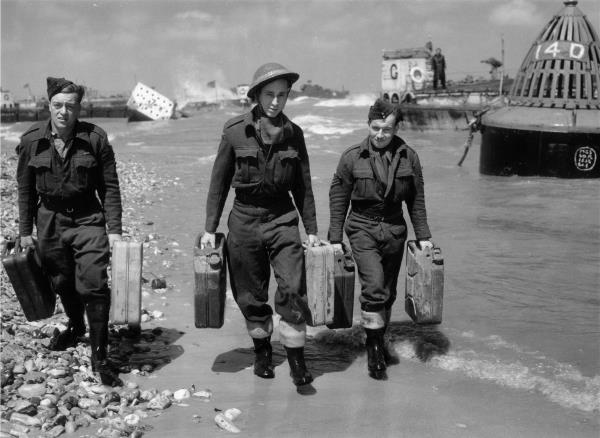
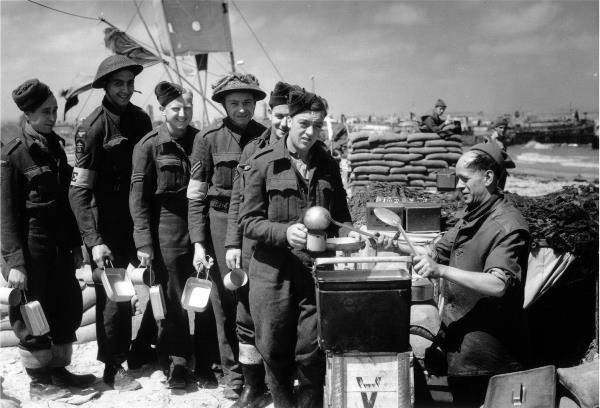

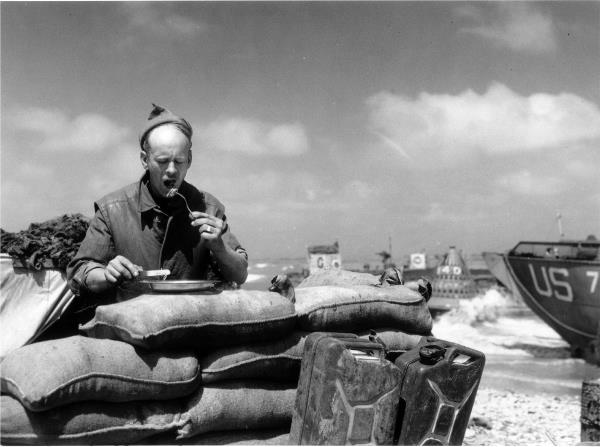

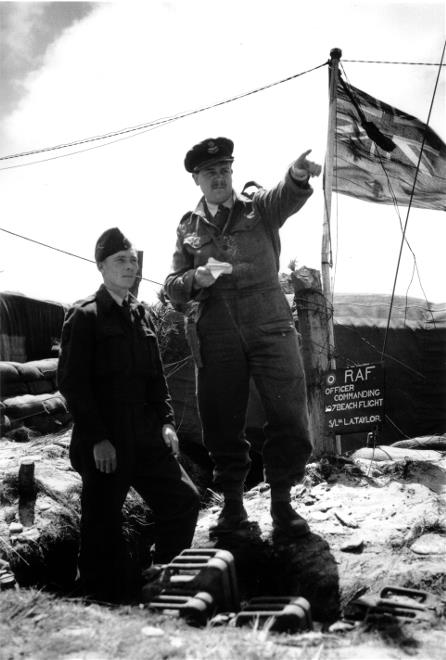
By mid-July work on the King beaches slackened off as the bulk of arrivals were, by then, being handled at the nearby Mulberry harbour at Arromanches and No. 89 R.A.F. Embarkation Unit were taking over the work of the Beach Squadrons.
The King/Love beaches were closed on 17th July. 107 R.A.F. Beach Flight returned to the U.K. with the rest of 4 Beach Squadron late in August 1944 and the unit was disbanded.
Main sources used for this page:
Operations Record Book of No. 4 RAF Beach Squadron – found in, ‘Air Ministry and Ministry of Defence: Operations Record Books, Miscellaneous Units’ AIR 29/438 at The National Archives.
The Administrative History of The Operations of 21 Army Group on the Continent Of Europe 6th June 1944 – 8th May 1945, published in Germany in Nov. 1945.
- Len Sexton was attached to 89 Embarkation Unit after the King/Love beaches were closed and then, on the disbandment of 4 Beach Squadron, he was posted to H.Q. 2nd T.A.F. He finished the war working in A.O.C. in Chief Sholto-Douglas’ office. After demob in 1946, Len served in the R.A.F. reserve, in Civil Defence and he was an active member of the Royal British Legion. He died in 1997. Many thanks to Len Sexton’s son, Ken for supplying the information about his father and the photo. ↩︎
